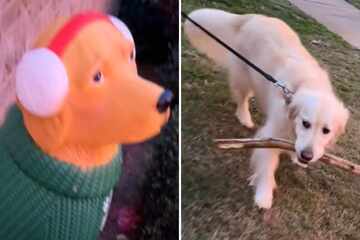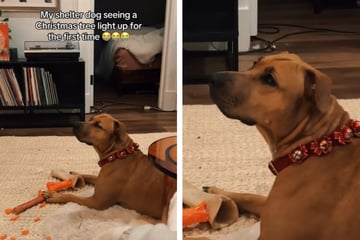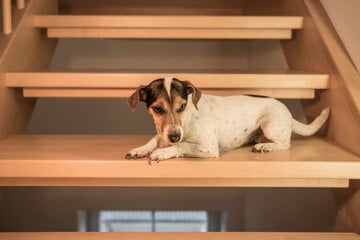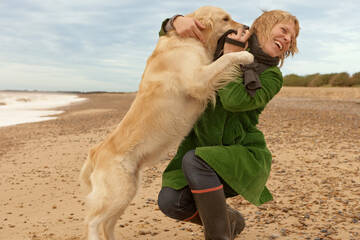Leaving dogs alone: How to help your pet with separation anxiety
Sooner or later, any dog parent is going to have to leave their pooch home alone. How long can you leave your dog alone, and when is the best time? What are the major symptoms and causes of separation anxiety in dogs, and what can you do to help? With this guide, TAG24 has you covered!
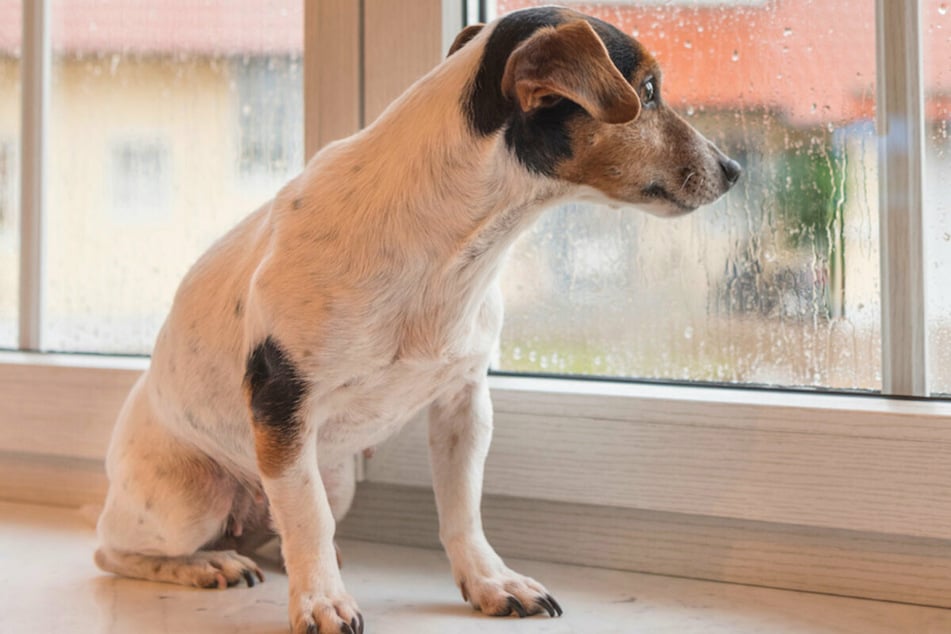
Dogs are like old friends. Even if they're whiney, or misbehave, we still love 'em.
When you leave a dog alone, as all pet owners need to do from time to time, they can get stressed out and sometimes destructive. These are clear signs of separation anxiety in your pooch, and something that you'll want to sort out.
These little dudes will usually bark their guts out to try and make you stay home with them. And while it's cute as hell, it can lead to some peaved-off neighbors pretty quickly.
In the end, dogs are pack animals by nature, and can get separation anxiety if left alone for too long or not used to the transition.
TAG24 is here to help answer your burning questions, and create a more comfy situation for your pup.
How long can you leave a dog alone?
As with most things when it comes to dogs, the length of time you can leave a dog by itself depends on how old it is, how well-trained, and how prepared it is for being home alone.
For pet owners that work long shifts and are away from home for at least eight or nine hours, that potentially means a lot of alone time.
Adult dogs can generally be left alone for several hours, but it's not the most ideal scenario.
If a dog owner needs to leave their pooch home alone for a large chunk of time, they should certainly rethink their daily routine. Consider whether your employer would be okay with you bringing your dog with you to the office, or perhaps whether you can take an extended lunch break to go for a walk with your little buddy. This is certainly something to consider if you are thinking of getting a dog. You may also think of enlisting the help of a dog walker to break up periods you are away.
Please note: Dogs need their "pack" to feel content. While every dog is different, no dog should be alone for more than a few hours a day if it can be avoided.
When can you leave a dog home alone?
At the beginning of their lives, during a puppy's first few weeks, you should try to never leave them alone. Surrounded by its siblings and mother, a puppy will gather the necessary skills and strength to survive apart from their family. After a few months, you can start spending time with a puppy separate from their mother.
Once the puppy has been separated from their family, it's important to train them while they're still young. Much like human babies, puppies far more receptive to learning things than older pups. If you work a job with long hours away from home, where you will need to leave the pooch alone regularly, getting them ready for this eventuality is extremely important.
In no case should a puppy be left home alone for hours at a time. At the beginning of them gettng used to a new space, they should only be left alone for one or two minutes, then five, and gradually longer. As time progresses and the dog grows up, you can start leaving it alone for longer periods of time.
Leaving a dog alone: Separation anxiety symptoms
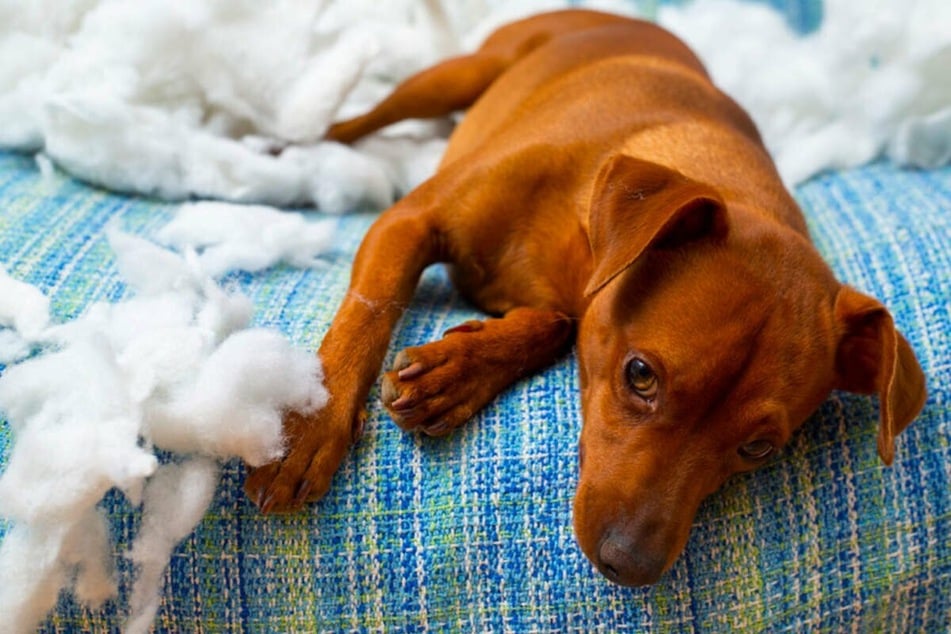
Separation anxiety manifests itself in dogs in a variety of ways. Its symptoms are often misunderstood and thought to be signs of a happy dog, for example, when a dog wags their tail and jumps up when greeting you.
Here are some key symptoms of separation anxiety in dogs:
- Whining, yipping, howling
- Excessive barking
- Restlessness
- Destructiveness
- Unusual urination and defecation inside the home
While a tail-wagging dog may look happy, its excessive wagging can actually be an indication that the dog is stressed out. We all love that feeling of our pooch being happy to see us when we get home, but it can be very easy to overlook that it could be a sign of frustration and incomprehension at having been left alone.
While it's difficult to know a dog's understanding of a sense of time, you don't want your pooch to suffer – so you should pay attention to its behavior and talk to your veterinarian if you think something is off in their behavior.
How to help a dog with separation anxiety
You need to start preparing your dog for being left home alone from a very young age if you want to protect it from separation anxiety.
Stephanie Salostowitz, a dog expert from Germany, recommends that you start training your dogs to be alone while they are still puppies. Of course, if you adopt an older dog, you'll need to go about this a different way.
It is not impossible to get an older dog used to being left home alone, but it does take quite a while. You need to gently but consistently practice leaving your pooch at home for increasing periods of time. It can be helpful to install a Webcam to observe your dog at home, and take appropriate action based on its actions. Stay in touch with your vet for more detailed and personal advice.
It is super important that a dog owner gets their dog used to being alone. There are steps to take to help your dog combat separation anxiety, and to feel better when left home alone.
How to start leaving your dog home alone

Leaving your dog home alone can be a big moment in their journey.
After all, leaving your pup alone for the first time can be traumatic, akin to a child going to school or spending their first night without their parent. Here's how to not traumatize your dog. (And yourself, for that matter.)
Tip 1: Increase the amount of alone time gradually
Start off by leaving your dog alone, in a positive environment, for a few seconds. Gradually increase this amount of time so that they get used to you being away. Here's a four-step guide:
- Step 1: Simply walk out of the room for a few minutes. Only do this if the dog is in a stress-free situation and feels comfortable.
- Step 2: Take note of whether the dog gets restless. If they jump up and immediately run after you, make sure to try and send them back to a safe space alone. Make it clear that you want them to "stay." Keep calm, never raise your voice, but remain clear and firm.
- Step 3: Once you are out of the room, come right back in. Prolong this period of time as you continue to train your dog. The plan is to try and make the dog understand that you will always come back to them and that there is no need or reason to worry.
- Step 4: Continue to practice with your dog, increasing the dog's alone time more and more and more. Make sure that these increases are taken in small steps, keeping note of whether your dog is relaxed or not. The more relaxed, the more ready your dog is to be left alone.
Tip 2: Make the separation a minor matter
It's important to make sure that your leaving is not viewed as this giant event, worthy of your dog's attention. Leave when your dog has played, eaten, and is feeling sleepy and relaxed. If you are still training, head out for a few minutes and come back into the room without making direct reference to your favorite pooch. Act as if nothing has happened, as if it's no big deal. Continue to behave this way when you return even after longer periods apart.
Tip 3: Do not encourage his behavior
If your dog whines, or perhaps runs after you and tries to jump up on you, make sure to not reinforce their behavior. If your dog is behaving intensely, make sure they understands that everything is fine and that they don't need to be anxious. You're going to come back, and there's no need for the excitement.
Whatever you do, make sure that you don't respond to the dog if it begins "howling". This will reinforce their behavior, make it more common, and make it go on for longer.
Tip 4: Do not overload or punish your dog
Always keep in mind when practicing alone time with your dog that it will be different from pet to pet. Give your pooch the time that they need to adjust, and don't try to increase the time apart too quickly. The idea is to make things comfortable for your dog, not to rush into leaving them alone for long periods of time.
Tip 5: Keep your dog busy
It may only be a small consolation, but toys or safe bones can help a dog get through their time alone better. Distractions like chew toys are particularly helpful for relieving separation anxiety and stress in dogs. If possible, it's also a great idea to get a second dog if you are concerned about your dog having crippling separation anxiety. The two pooches will look after each other, keep each other company, and be much happier together.
Dog exercises and health helps with separation anxiety
In much the same way that humans need physical health to maintain their mental health, dogs need consistent movement and overall health to remain truly happy. Minor health issues like mild ear infections can put extra stress on your dog, driving up its separation anxiety and making it hard to leave them alone.
It is therefore vital that you rule out all possible health issues by having your four-legged friend examined regularly by a veterinarian.
Final tips for leaving your dog home alone
It's super important to make sure your buddy understands that it is okay to not be by your side sometimes. Once this becomes easier, you'll be able to leave them alone for hours without causing any psychological harm or stress.
Work step by step and be patient when dealing with separation anxiety in dogs. It will take time, but it will work, and you'll be able to leave the house knowing that your dog is safe, sound, and calm.
Cover photo: 123RF / Thaka1
